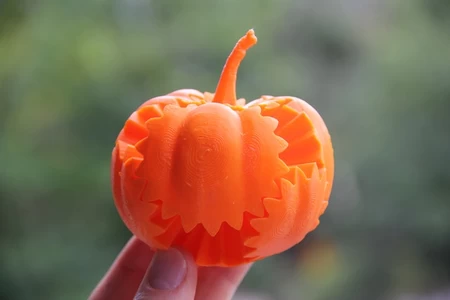String "climbing" mechanism 3D for print
2770 Views 2 Likes 0 Downloads Download the piece here from 3dforprint
...
1) Embroidery floss (super center, sewing shop, Amazon, etc). Sewing thread is too thin, and standard cotton string is too large... and frays.
Printing:
Print 2 "Case.stl" and "Ring.stl", then print 1 each of the remaining pieces.
Assembly:
Prior to assembly, test fit and trim, file, sand, etc. all parts as necessary for smooth movement of moving surfaces, and tight fit for non moving surfaces. Depending on the colors you chose and your printer settings, more or less trimming, filing and/or sanding will be required. If the tight fitting components are too loose, add a small dot of cyanoacrylate to each side of the pin, allow to dry completely (I use accelerator to speed the process), then try the fit again. Repeat until tight.
Assemble as per "Assembly.stl". I perform the assembly task in the following order:
1) Press "Spool Center.stl" onto "Spool Large.stl".
2) Press "Spool Small.stl" onto "Spool Large.stl".
3) Press "Axle.stl" into "Spool Large.stl".
4) Cut two 24" lengths of embroidery floss, and tie a knot into one end of each piece.
5) Starting with the unknotted end, thread the embroidery floss into the small hole in "Spool Large.stl" starting from the flat side, then pull it all the way through until the knot sits inside the hole. Secure the knot in the hole using cyanoacrylate glue.
6) Repeat step 5 for "Spool Small.stl".
7) Wind the embroidery thread onto the spools in opposite directions. On the large spool, leave about 4" of embroidery thread unwound, the small spool about 10" of embroidery thread unwound.
8) Slide one axle into one of the "Case.stl", then the other into the second "Case.stl", then engage the dovetails, noting the orientation of each of the "Case.stl" parts.
9) Insert the embroidery thread from the small spool through the hole in the end of one of the "Case.stl" parts, then insert the thread from the large spool through the hole in the other "Case.stl" part.
10) Tie one "Ring.stl" to the embroidery thread from the large spool. I tied a double knot, secured the knot with cyanoacrylate glue, then trimmed away the excess. This ring is the "lower ring".
11) Tie the remaining "Ring.stl" to the thread from the small spool and secure and trim it as was done to the lower ring. This is the "upper ring".
12) Pick the entire assemble up by the rings, the upper ring on top. Pulling either ring will cause the String Climbing Mechanism to climb the embroidery thread. Allowing the embroidery thread to go slack will allow gravity to return the String Climbing Mechanism to the lower ring.
Hope you print one!
Designer
Greg Zumwalt3d model description
A string "climbing" mechanism used in toys both old and new....
3d model print parameters
Parts I Purchased:1) Embroidery floss (super center, sewing shop, Amazon, etc). Sewing thread is too thin, and standard cotton string is too large... and frays.
Printing:
Print 2 "Case.stl" and "Ring.stl", then print 1 each of the remaining pieces.
Assembly:
Prior to assembly, test fit and trim, file, sand, etc. all parts as necessary for smooth movement of moving surfaces, and tight fit for non moving surfaces. Depending on the colors you chose and your printer settings, more or less trimming, filing and/or sanding will be required. If the tight fitting components are too loose, add a small dot of cyanoacrylate to each side of the pin, allow to dry completely (I use accelerator to speed the process), then try the fit again. Repeat until tight.
Assemble as per "Assembly.stl". I perform the assembly task in the following order:
1) Press "Spool Center.stl" onto "Spool Large.stl".
2) Press "Spool Small.stl" onto "Spool Large.stl".
3) Press "Axle.stl" into "Spool Large.stl".
4) Cut two 24" lengths of embroidery floss, and tie a knot into one end of each piece.
5) Starting with the unknotted end, thread the embroidery floss into the small hole in "Spool Large.stl" starting from the flat side, then pull it all the way through until the knot sits inside the hole. Secure the knot in the hole using cyanoacrylate glue.
6) Repeat step 5 for "Spool Small.stl".
7) Wind the embroidery thread onto the spools in opposite directions. On the large spool, leave about 4" of embroidery thread unwound, the small spool about 10" of embroidery thread unwound.
8) Slide one axle into one of the "Case.stl", then the other into the second "Case.stl", then engage the dovetails, noting the orientation of each of the "Case.stl" parts.
9) Insert the embroidery thread from the small spool through the hole in the end of one of the "Case.stl" parts, then insert the thread from the large spool through the hole in the other "Case.stl" part.
10) Tie one "Ring.stl" to the embroidery thread from the large spool. I tied a double knot, secured the knot with cyanoacrylate glue, then trimmed away the excess. This ring is the "lower ring".
11) Tie the remaining "Ring.stl" to the thread from the small spool and secure and trim it as was done to the lower ring. This is the "upper ring".
12) Pick the entire assemble up by the rings, the upper ring on top. Pulling either ring will cause the String Climbing Mechanism to climb the embroidery thread. Allowing the embroidery thread to go slack will allow gravity to return the String Climbing Mechanism to the lower ring.
Hope you print one!




















